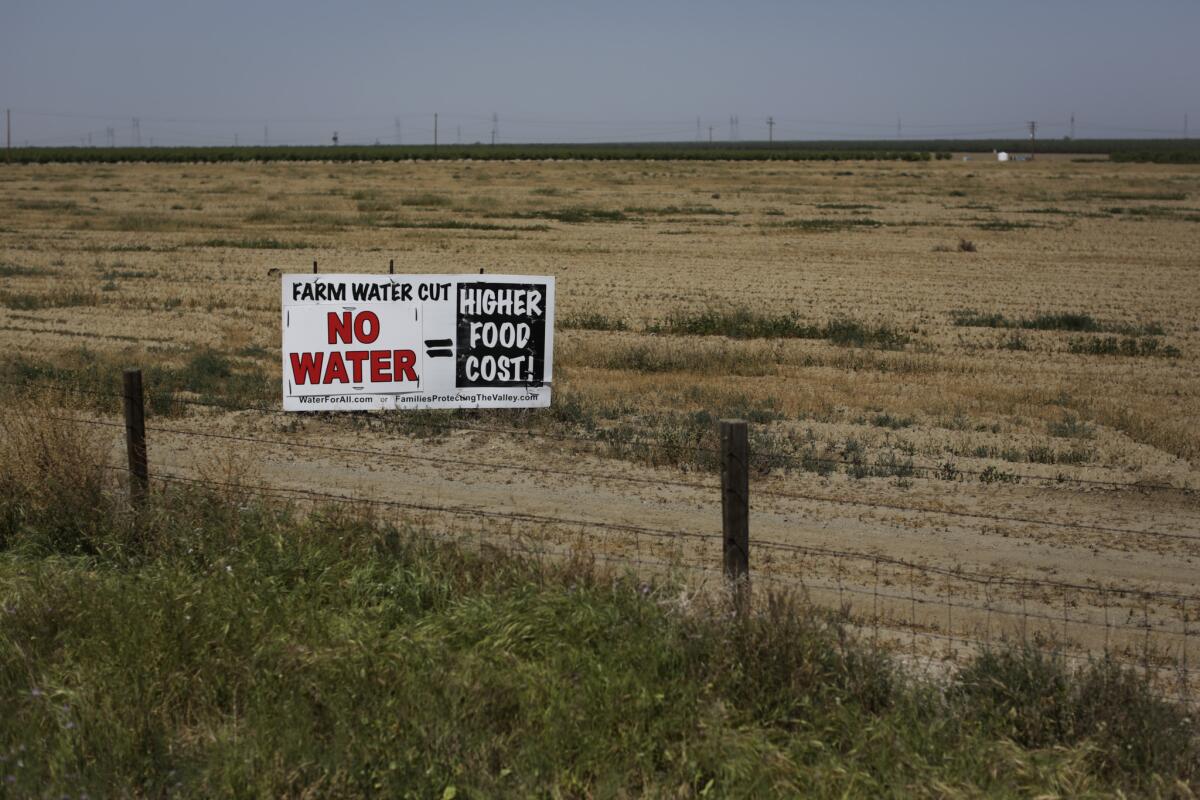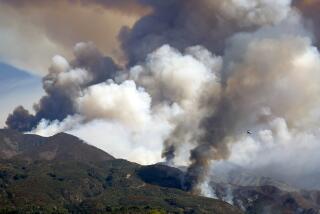Drought and record-breaking heat are bad combination as fire season begins

A sign along Interstate 5 in Coalinga, Calif., warns of rising food costs because of the drought.
- Share via
Record-breaking heat and continuous drought could make for an active and dangerous fire season this year.
The fire season officially started Monday. It’s barely underway. But local, state and federal authorities are concerned that California’s parched conditions could lead to devastating wildfires.
“We are going to experience significant fires in the absence of wind, so our success is going to depend on a prepared community,” Ventura County Fire Chief Mark Lorenzen said at a news conference Monday.
Officials urged residents to conserve water and to use caution near dry brush.
Mark Ghilarducci, director of the Governor’s Office of Emergency Services, spoke of the importance of continued conservation efforts with dwindling water supplies in the state’s reservoirs.
This month, Northern California -- specifically the Sacramento Valley -- has above-normal fire potential because of a threat of north wind patterns that could dry up vegetation, according to a fire outlook prepared by the National Interagency Fire Center’s Predictive Services.
In Southern California, a strengthening El Niño could change temperature patterns, causing fewer lengthy periods of above normal temperatures. But it could result in more dry lightning than last summer, possibly sparking more fires.
Northern California has been inundated with fires sparked by lightning this year.
Lightning prompted the U.S. Forest Service to deploy eight smoke jumpers to the Mountain fire on April 13 in the Sequoia National Forest, said agency spokesman Stanton Florea.
“This small, lightning-caused fire was the earliest fire they’ve ever jumped in the 58-year history of the program,” he said.
Firefighters have been deployed to at least 221 fires in California national forests this year. The fires have scorched more than 2,400 acres.
Because the threat of wildfire is high, the forest service has prepared 5,000 fire personnel for the fire season.
More than 9,500 acres of forest have been treated to try to protect plant life during fire season.
For breaking news in California, follow @VeronicaRochaLA
More to Read
Sign up for Essential California
The most important California stories and recommendations in your inbox every morning.
You may occasionally receive promotional content from the Los Angeles Times.







